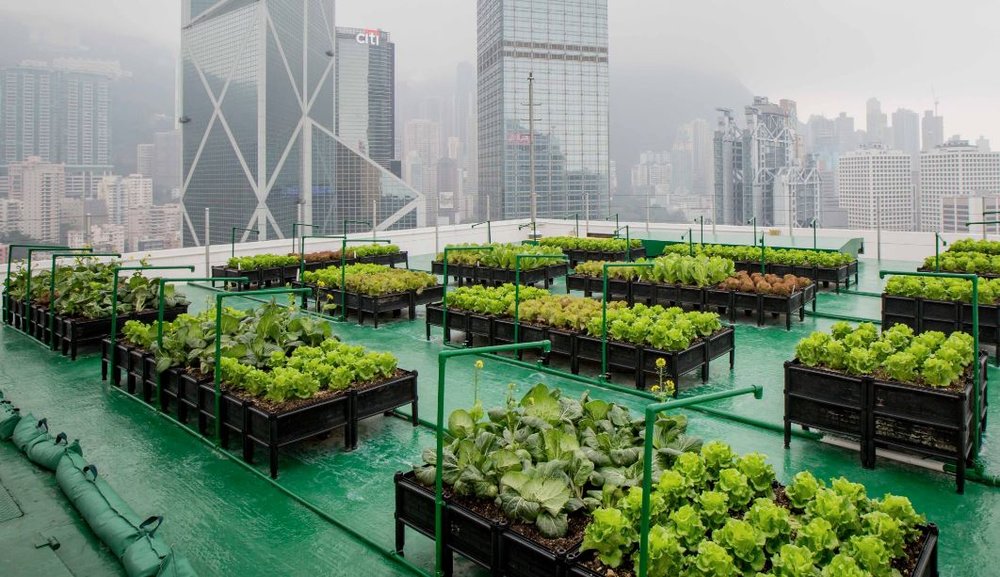The City Blooming PDFs
The City Blooming PDFs
Blog Article
The Facts About City Blooming Uncovered
Table of ContentsThe Best Strategy To Use For City BloomingRumored Buzz on City BloomingThe Single Strategy To Use For City Blooming3 Easy Facts About City Blooming ShownUnknown Facts About City Blooming
Interested in expanding food available in the City of Chicago? Thinking of starting a neighborhood yard? Changes to the Chicago Zoning Ordinance allow agricultural uses like community gardens and urban farms in lots of components of the city. Below is a list of regularly asked questions pertaining to the guidelines and regulations that growers must think about when planning a metropolitan agriculture task.
The zoning change does not modify any type of other codes taking care of composting, building authorizations, buying or leasing City had building, organization licenses or environmental contamination. There are existing codes that regulate these problems and they continue to be completely impact and might be relevant to your project. Community gardens are usually possessed or taken care of by public entities, civic organizations or community-based organizations and maintained by volunteers.
Urban farms grow food that is planned to be marketed, either on a not-for-profit or for-profit basis. Due to their industrial function, city ranches call for a company permit.
City Blooming - Truths
Composting is permitted yet just for plant material that is produced and made use of on website. The amount of compost material can not exceed 25 cubic backyards at any kind of given time according to the criteria in 7-28-715 of the City's Municipal Code. Yes. Since the dirt at a lot of brand-new yard sites needs amending, compost, dirt, wood chips, or various other materials can be gotten to construct or enhance the expanding space - container and raised bed gardening etc..

If a building permit is required then the hoophouse will be taken into consideration an accessory building. You can figure out more about the building license requirements by speaking to the Department of Buildings. The 25,000-square-foot size limit is meant to avoid a single community garden from controling a provided block or diminishing the block's existing domestic or commercial character.
The limit does not apply to gardens found in Public Open Room (POS) areas. Can there be more than one area yard that is 25,000 square feet on a single block? Fencing is not needed, nevertheless, yards that have big car parking areas might be needed to set up fencing or other landscape you could try this out design functions.
The City Blooming Statements
B1 & B2 districts call for that all commercial usage tasks be conducted inside your home. Is fencing needed for metropolitan farms? Fencings may be needed, along with landscape design and screening, for specific parking locations and exterior job or storage areas depending on location and the particular task taking place.
Yes. Urban ranches require structure authorizations and zoning authorizations before construction. Other kinds of city evaluation might be called for depending on particular frameworks, tasks, dimension, landscaping, licensing, public heath and stormwater monitoring issues. Much of these needs are determined in the task design or permitting process, nonetheless, the candidate may be liable to independently identify particular licenses or permits that might be needed.
Yes. The kind of license is determined by what is happening at the site. The Department of Service Matters and Consumer Protection can aid establish the certain type of company permit that's required. Yes. Off street parking is required for most business projects in Chicago. The called for number of garage is based on the variety of workers working with website and not the square video of the expanding room.
City Blooming for Dummies

Yes. An urban farm can offer compost product generated on website, nonetheless, the procedure needs to abide with the laws in 7-28-715 of the Chicago Municipal Code. Yes. Aquaponic systems are allowed inside on urban farms in lots of zoning districts. However, a zoning evaluation and building license is needed in order to install structures or systems and a service certificate is required as explained over.
Approximately five hives or swarms of honey might be maintained as an accessory usage. Nevertheless, beekeepers have to register with the Illinois Department of Farming. For even more details about the recommended zoning amendment you might get in touch with the Division of Housing and Economic Development, Bureau of Preparation and Zoning at 312.744.8563.
Farming in cities and urban areas A city ranch in Chicago. Urban agriculture describes different practices of cultivating. https://cityblooming.edublogs.org/2024/06/27/city-gardening-transforming-urban-spaces/, handling, and distributing food in metropolitan locations. The term additionally applies to the location activities of pet husbandry, aquaculture, beekeeping, and horticulture in a city context. Urban agriculture is distinguished from peri-urban agriculture, which takes location in backwoods at the side of suburban areas.
Not known Facts About City Blooming
It can entail a motion of natural cultivators, "foodies" and "locavores", who seek to develop social media networks based on a common values of nature and area holism. These networks can create using official institutional assistance, becoming incorporated right into regional town planning as a "change town" movement for lasting urban growth.
In either instance, the extra direct accessibility to fresh vegetable, fruit, and meat items that may be realised with urban agriculture can enhance food safety and food safety and security while decreasing food miles, leading to lower greenhouse gas discharges, thus adding to climate change reduction. Some of the initial evidence of urban farming comes from Mesopotamia.
Report this page